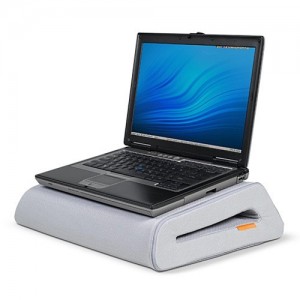You know that residual kink in your neck?
It might be from hours of computer use. A lot of what we do these days has us hunching forward. And now with the popularity of tablets and laptops, most of us spend a majority of the day on these devices.
Even after work, many of us relax with a computer in our laps or next to us in bed. Think about when you're sitting on the couch with your computer resting in your lap. How do your neck muscles feel? Strained? How about that shoulder ache when you're propping yourself up in bed to type?
According to research at the Harvard School of Public Health, spending hours on a tablet or computer can cause neck and shoulder problems (October 2012 Harvard Health Letter). But you can avoid this pain with a few easy adjustments. 
- Raise it up.

If your device is too low, like in your lap, you can fatigue, distress, even damage your neck's muscles, nerves, tendons, ligaments, or spinal discs. Place it on a table with a tablet case that gives you a better angle. Or get one of those lap pillows for a laptop. - Take a break.
(It's probably good for your eyes and your soul, too, to take some time away from your devices.) - Change positions.
Every 15 minutes, move around. Stand up. Sit. Shift your behind. Adjust your weight. - Think about your ergonomics.
A simple rule of thumb is to keep your arms, wrists, and hands parallel to the ground. Relax your shoulders. Keep your elbows close to your body.

